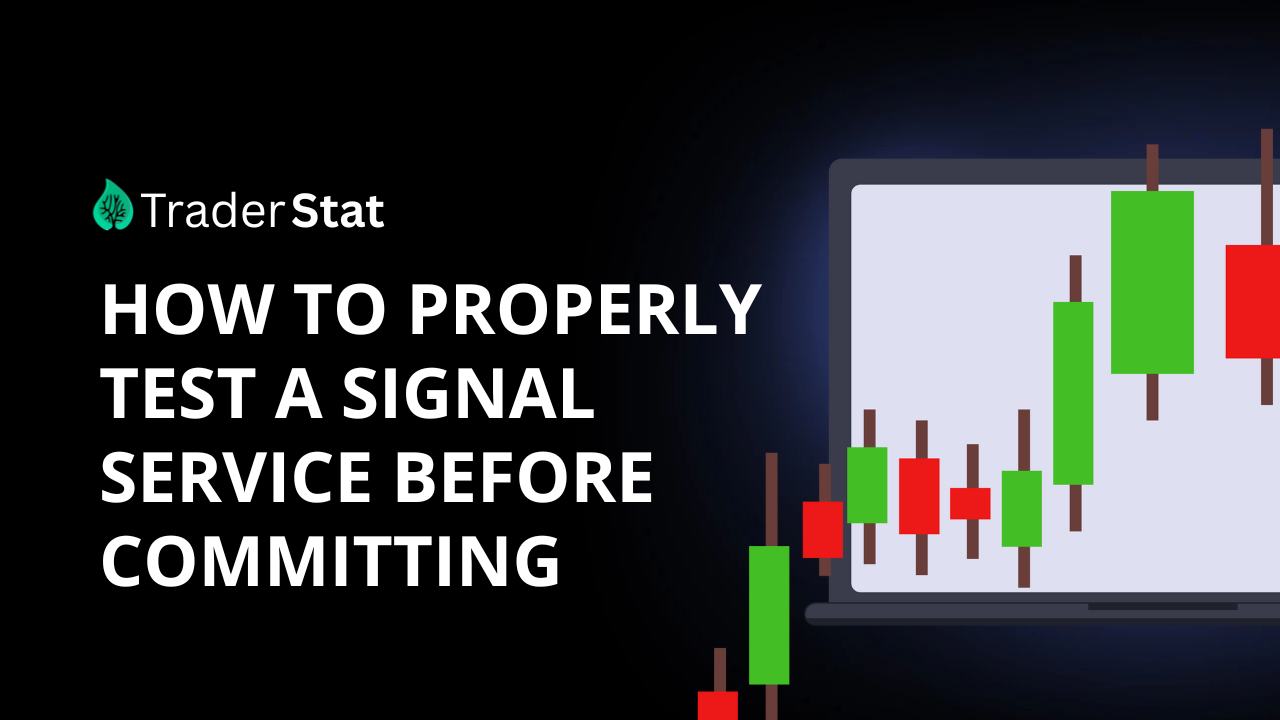
How to Verify a Signal Provider's Track Record
In the fast-paced world of forex and cryptocurrency trading, signal services promise to be your shortcut to profitability. But behind impressive marketing claims often lies a more complex reality. This guide provides a systematic, data-driven approach to thoroughly testing a signal service before committing your hard-earned capital.
The Three-Phase Testing Framework
Most traders make the mistake of evaluating signal services based solely on advertised win rates or testimonials. Our unique three-phase framework ensures you conduct a comprehensive evaluation that reveals the true quality of a service.
Phase 1: Pre-Demo Research (2-3 Days)
Before even starting a free trial, invest time in essential background checks:
Verification Status Check: Begin by verifying the provider's status on independent verification platforms like TraderStat.com, which offers audited results rather than self-reported metrics. Unlike most review sites, TraderStat thoroughly analyzes each signal provider's complete trading history, providing you with verified performance data you can trust. Be particularly attentive to what aspects of performance are actually being verified.
Next, analyze the track record with a critical eye. Look for performance consistency over at least 6-12 months, not just cherry-picked profitable periods. A transparent provider will openly disclose maximum drawdowns, a crucial metric that many services conveniently hide. Calculate risk-adjusted returns using Sharpe and Sortino ratios based on the provided data, and examine how they performed during different market conditions, both trending and ranging.

TraderStat Tip: TraderStat.com's verification process includes cross-checking claimed performance against actual trade timestamps, ensuring you see the complete performance picture—including the losing periods many providers try to hide.
Finally, assess their signal delivery mechanism. Research whether their delivery method (Telegram, email, platform integration) has experienced outages. Determine how time-sensitive their signals are and verify that they include complete trade information with clear instructions. Also check whether they provide follow-up updates on open positions or simply issue "fire and forget" initial signals.
Phase 2: Paper Trading Evaluation (2-4 Weeks)
Now it's time for active testing without risking capital. Create a dedicated testing environment to log and track all received signals, with these key components:
Signal Reception Setup: Establish baseline execution parameters by defining your standard execution time, spread assumptions, and commission structure. Document all parameters of each signal.
Implementation Testing: Evaluate whether you can realistically execute signals given your schedule and platform access. Verify broker compatibility and time zone alignment.
Develop a rigorous performance tracking methodology. Create a standardized tracking spreadsheet to document each signal with its theoretical outcome. Estimate typical execution delay and price differences to calculate theoretical slippage. Compare your results with the provider's claims, looking for discrepancies between what you're experiencing and what's advertised.

Phase 3: Limited Live Testing (2-4 Weeks)
Before full commitment, test with minimal capital:
Micro-Position Implementation: Begin trading the minimum position size your broker allows while maintaining proportional sizing between different signals. Document real execution metrics and calculate the performance difference between your paper trading and actual results.
Provider Communication Assessment: Test their support by asking technical questions, presenting difficult scenarios, and observing how they handle requests for clarification.
Perhaps most importantly, conduct a trading psychology evaluation. Document your emotional responses to both winning and losing signals. Evaluate if you're developing unhealthy dependence on the provider and determine if the emotional experience aligns with your trading personality and risk tolerance.
Red Flags That Signal Danger
During your testing process, remain vigilant for these warning signs in three critical areas:
Performance Red Flags
- Selective reporting: Provider only highlights winning trades or certain time periods
- Missing drawdown metrics: No clear information about maximum drawdowns or losing streaks
- Unrealistic returns: Claims of consistent 10%+ monthly returns with minimal drawdowns
TraderStat Insight: TraderStat.com's verification tools specifically target these common deceptions, allowing you to see complete trading histories—not just the profitable periods—and comparing claimed performance against actual market data to identify impossible or fabricated results.
Operational issues often manifest as delayed signal reporting, where providers post signals after significant price movement has already occurred. Post-result modifications and inconsistent methodology without explanation are troubling signs. Also problematic is excessive signal volume that makes practical implementation impossible.

Business Model Red Flags
- Pressure tactics: Creates urgency through "limited time offers" or "exclusive membership closing soon"
- Payment concerns: Requires payment in cryptocurrency only or refuses refunds
- Tiered signal quality: Suggests withholding best signals from regular members
The Decision Matrix: When to Commit
After completing all three testing phases, evaluate the signal service using this weighted decision framework:
Critical factors (70% of decision weight) include:
- Real profit factor: Actual gains divided by actual losses (including fees and slippage)
- Risk-adjusted performance: Returns relative to maximum drawdown experienced
- Psychological compatibility: Alignment with your trading temperament and stress tolerance
Secondary factors (30% of decision weight) include community quality, educational components, customer service quality, value proposition, and exit policy.
TraderStat Tool: TraderStat.com's Signal Provider Comparison Tool allows you to objectively evaluate multiple providers side-by-side using these exact metrics, taking the guesswork out of your decision process.

Implementing a Graduated Commitment Strategy
Instead of an all-or-nothing approach, consider this careful escalation path:
- Start with a minimal commitment phase using the smallest account size that makes mathematical sense
- Move to conditional expansion, increasing allocation only after predefined benchmarks are met
- Implement safeguards if using multiple signal providers
- Cap signal service trading to a set percentage of your total trading capital
- Establish quarterly reviews to decide whether to continue, increase, or decrease commitment
Conclusion
Testing a signal service requires methodical evaluation across multiple dimensions—far beyond simply checking win rates or testimonials. By following this comprehensive framework, you'll uncover the true value of any signal service and protect yourself from costly commitment mistakes.
Remember that even the best signal service is only as good as your implementation of it. The most successful signal followers view these services as tools within a broader trading strategy rather than miracle solutions. With proper testing and reasonable expectations, signal services can become a valuable component of your trading approach—but only after they've earned your trust through rigorous verification.
Final Recommendation: Before beginning your evaluation process, start with a visit to TraderStat.com to see which providers have already passed independent verification. This can save you valuable time by focusing your testing efforts on pre-screened services with verified trading histories, helping you avoid the most common signal service scams before you invest your time or money.


